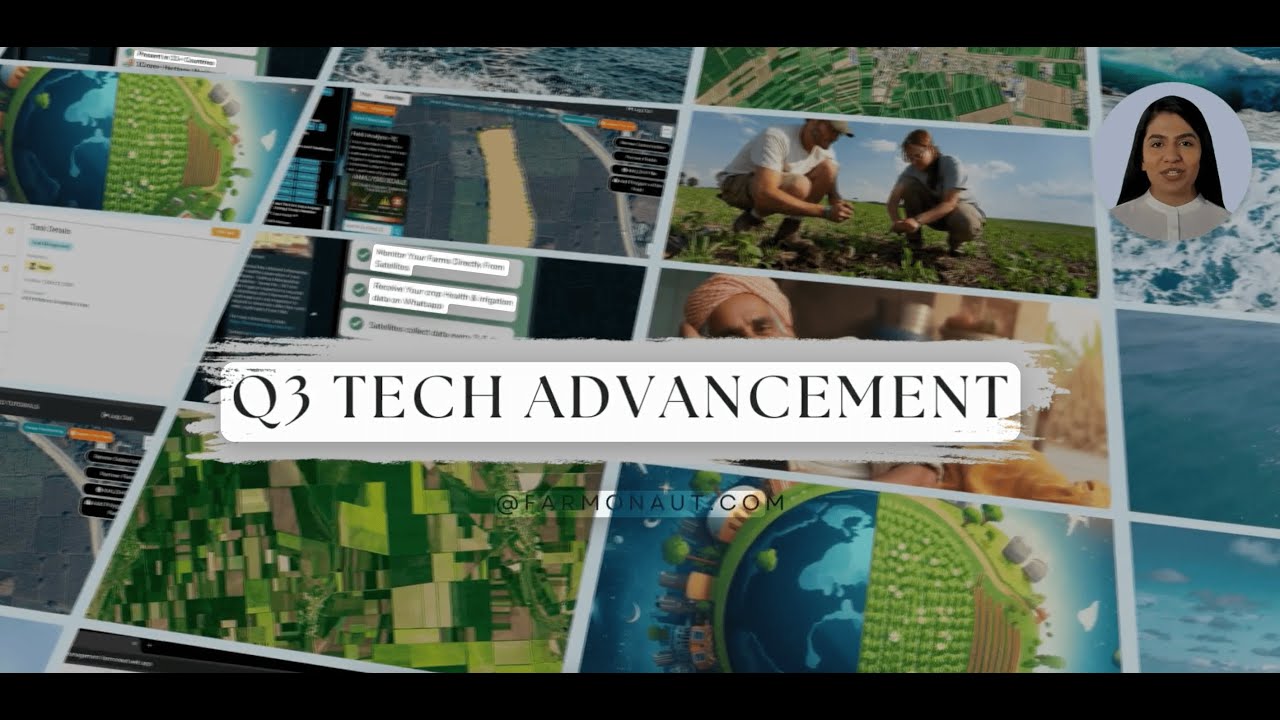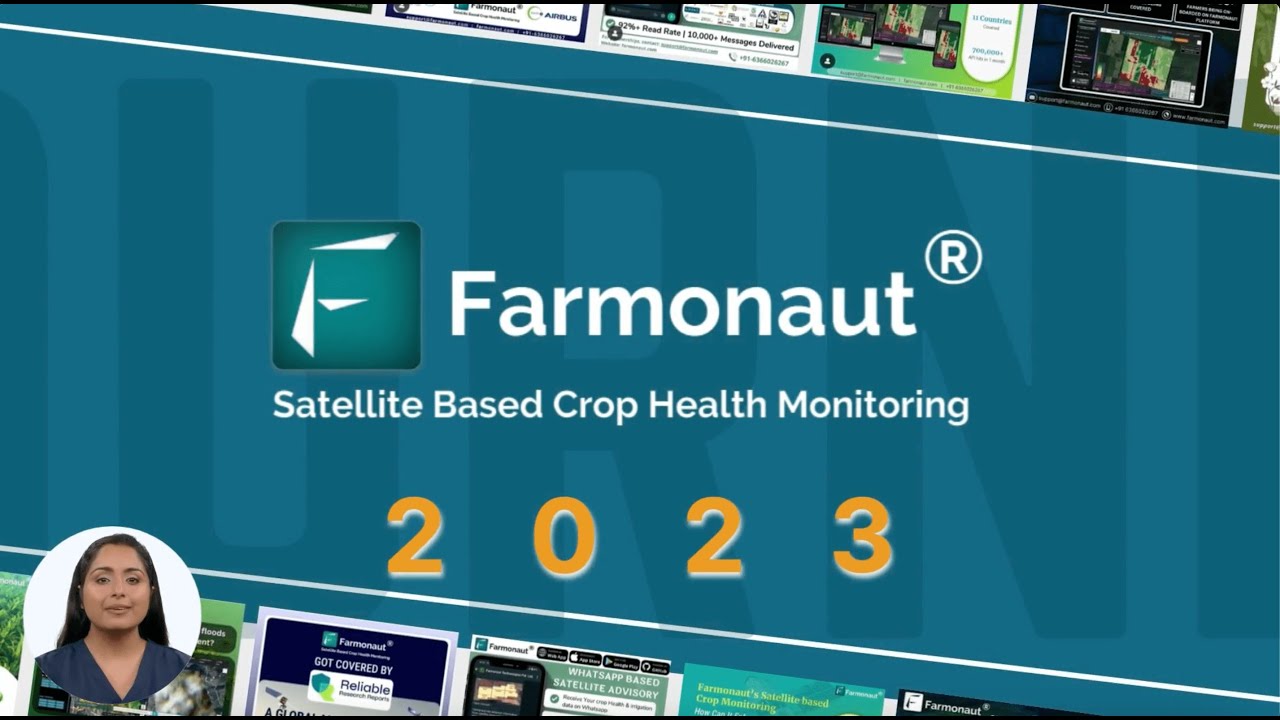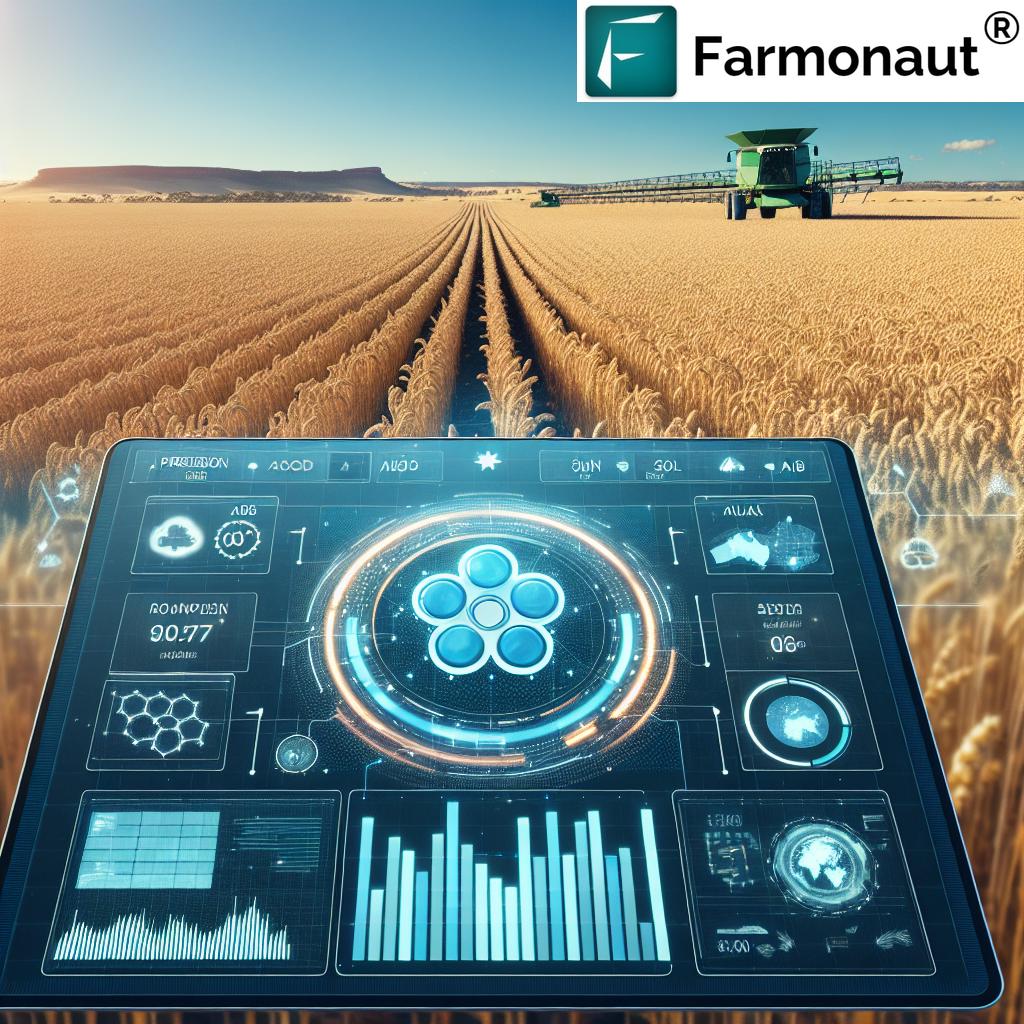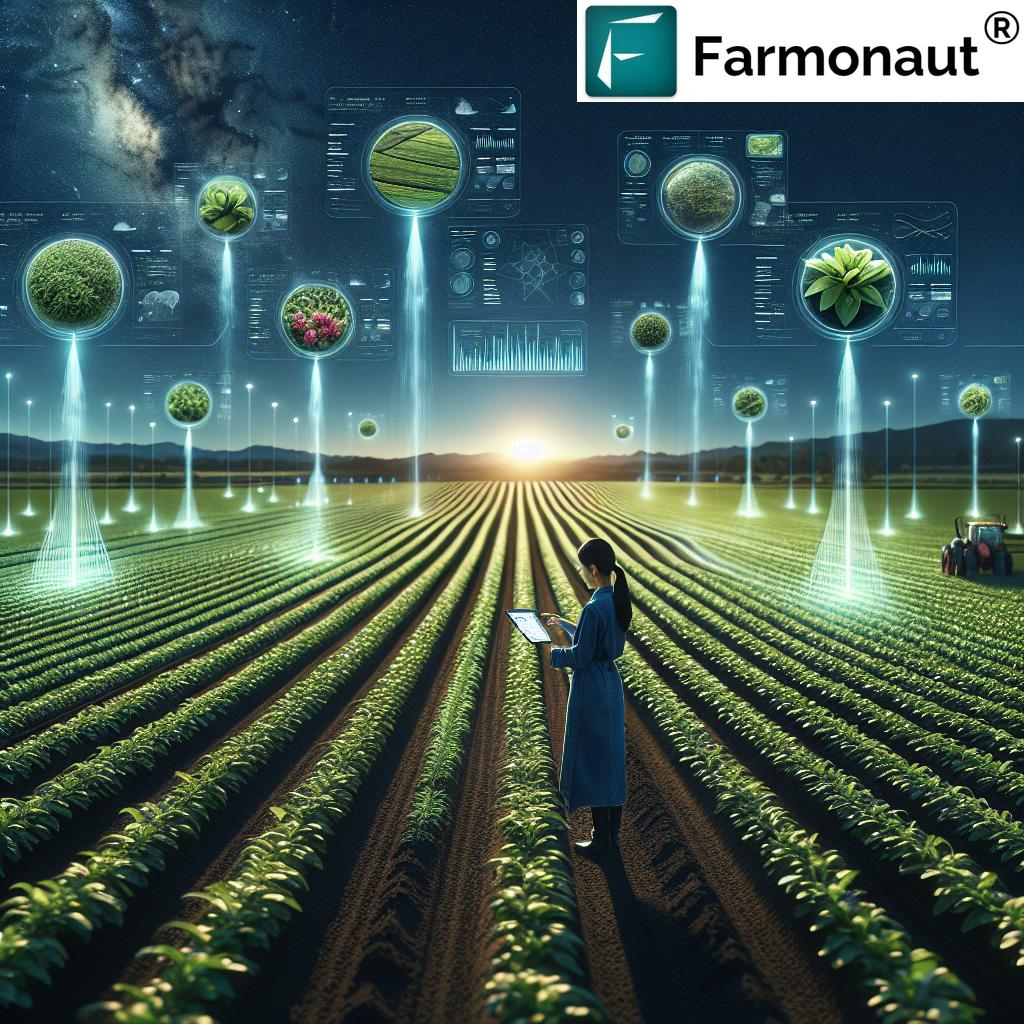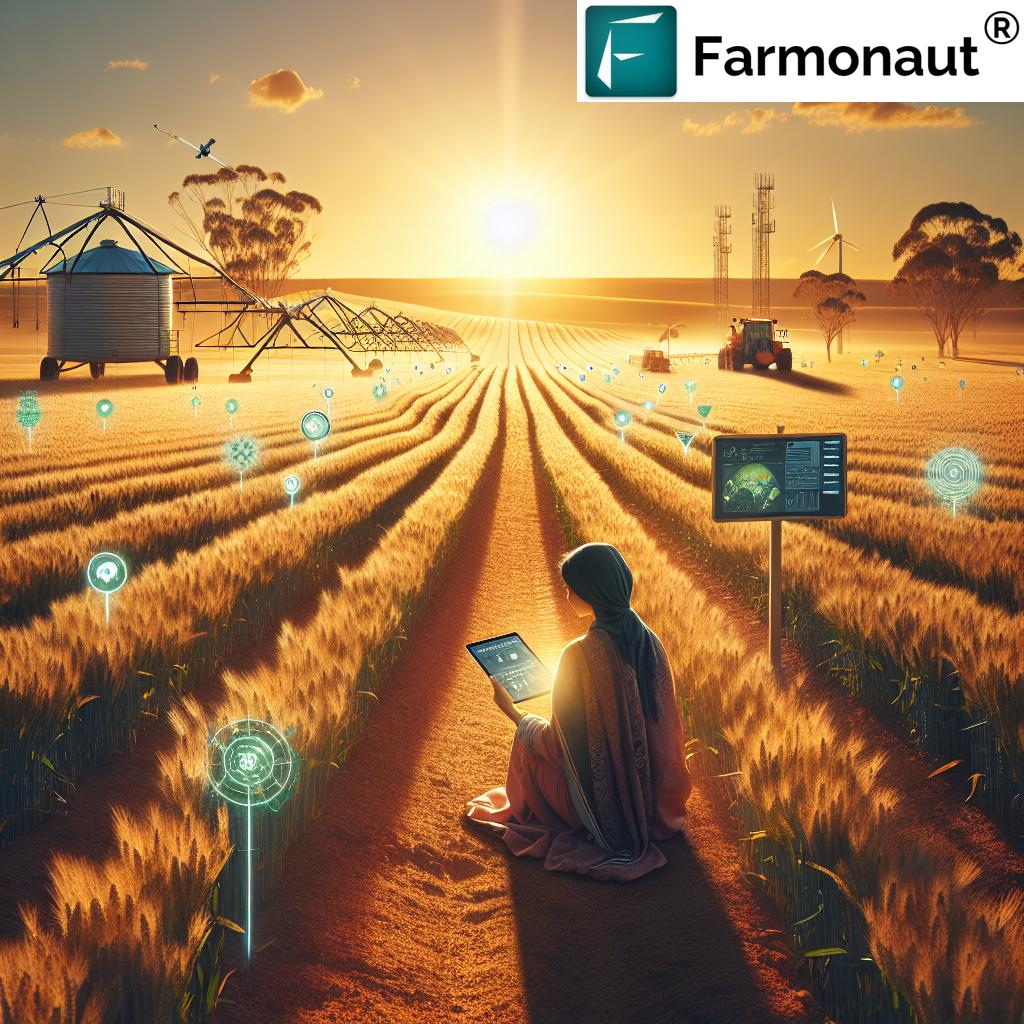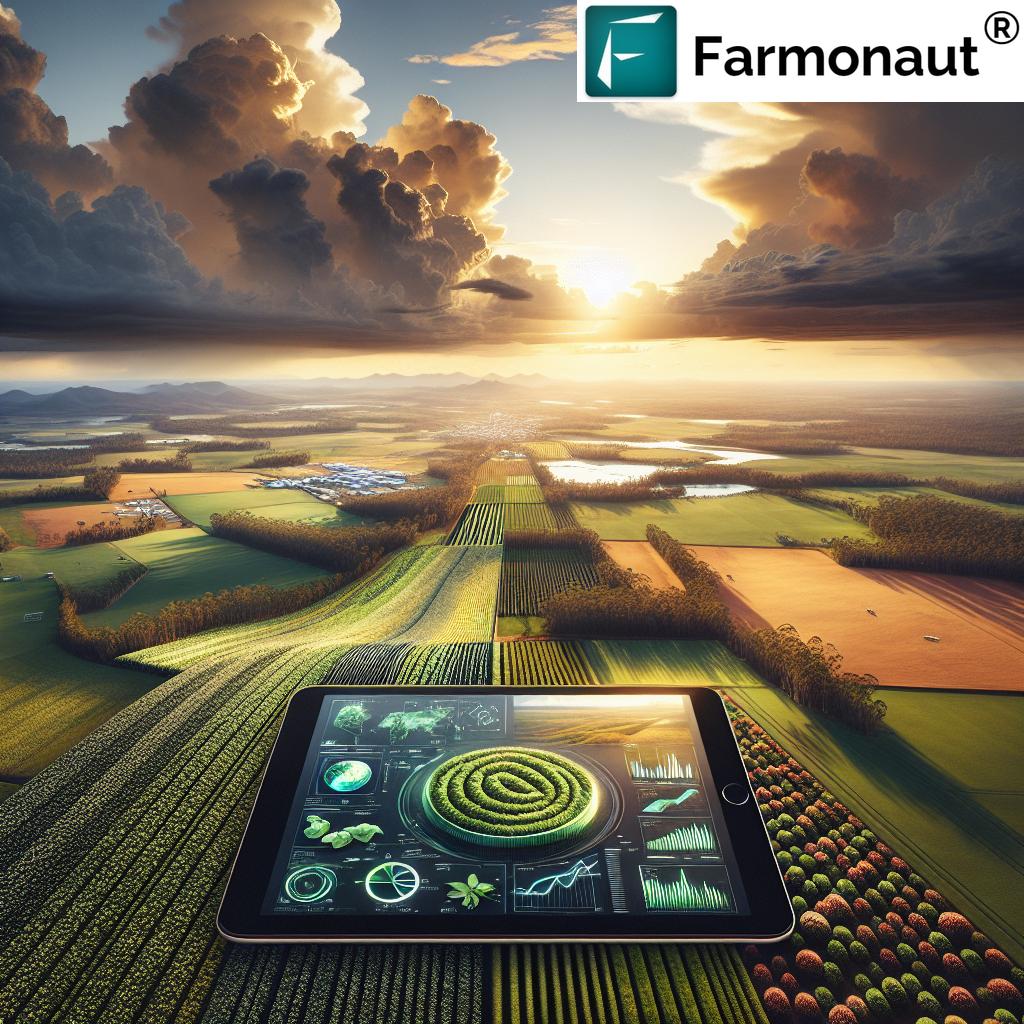Revolutionizing Australian Agriculture: How Precision Farming Technology Boosts Crop Yields and Sustainability
“Australian farmers using precision agriculture technology have reported up to 20% increase in crop yields.”
In the vast expanse of Australia’s agricultural landscape, a technological revolution is quietly unfolding. From the sun-drenched fields of Queensland to the fertile soils of Western Australia, precision farming technology is transforming the way we grow our food and manage our land. This weekly update from Farmonaut explores the cutting-edge advancements that are reshaping Australian agriculture, boosting crop yields, and promoting sustainability in ways we could only dream of a decade ago.
The Dawn of Precision Agriculture in Australia
As we delve into the world of precision agriculture, it’s essential to understand its profound impact on Australian farming. Precision agriculture technology encompasses a range of innovative tools and techniques that allow farmers to optimize their operations with unprecedented accuracy. These include satellite imagery for farming, remote sensing in agriculture, advanced crop monitoring systems, and smart farming solutions that are changing the game for farmers across the continent.
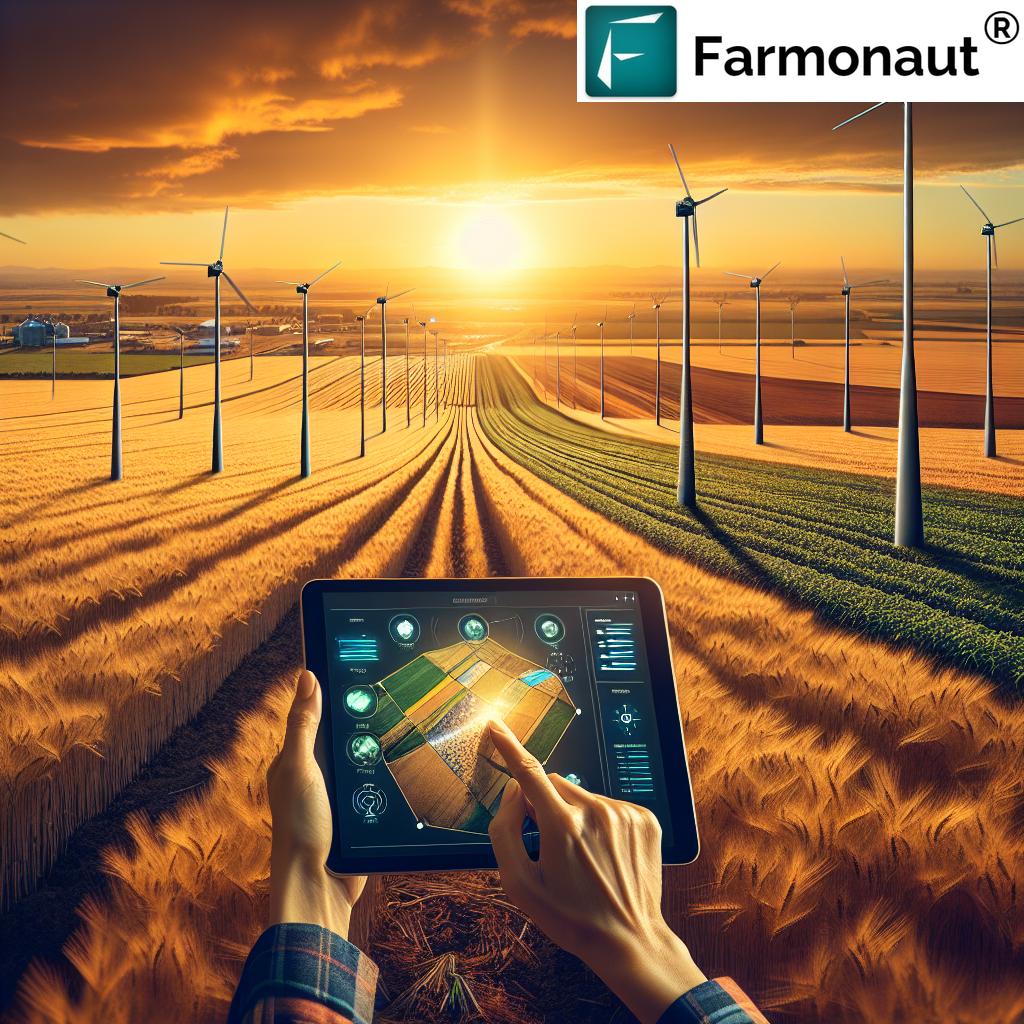
The adoption of these technologies is not just a trend; it’s a necessity in the face of climate change, resource scarcity, and the ever-growing global demand for food. Australian farmers, known for their resilience and innovation, are at the forefront of this agricultural revolution, embracing new tools to overcome challenges and maximize their productivity.
Satellite Imagery: A Bird’s Eye View of Crop Health
One of the most significant advancements in precision agriculture is the use of satellite imagery for farming. This technology provides farmers with a comprehensive view of their fields, offering insights that were previously impossible to obtain. By analyzing multispectral images from space, farmers can assess crop health, detect early signs of stress, and make informed decisions about irrigation, fertilization, and pest control.
“Satellite imagery for farming can detect crop stress up to 2 weeks earlier than visual inspection methods.”
This early detection capability is a game-changer for Australian agriculture. It allows farmers to address issues before they become visible to the naked eye, potentially saving entire crops from failure. Moreover, the use of satellite data enables precise application of resources, reducing waste and minimizing environmental impact.
Remote Sensing: Unlocking the Secrets of Soil and Crops
Remote sensing in agriculture goes hand in hand with satellite imagery, providing farmers with detailed information about their land and crops. Through various sensors and imaging techniques, remote sensing can measure soil moisture, nutrient levels, and even predict yields with remarkable accuracy.
In the sun-baked regions of Central Australia, where water is precious, remote sensing helps farmers optimize irrigation schedules. By understanding the exact moisture needs of their crops, farmers can use water more efficiently, ensuring that every drop counts. This not only conserves resources but also leads to healthier plants and higher yields.
Crop Monitoring Systems: The Pulse of Modern Farming
Advanced crop monitoring systems are the nerve centers of precision agriculture. These sophisticated networks of sensors and data analytics tools provide real-time information on everything from weather conditions to plant health. For farmers in the diverse climates of Australia, from the tropical north to the temperate south, this constant stream of data is invaluable.
Imagine a wheat farmer in the Western Australian wheatbelt receiving an alert about an impending frost. With this information, they can take preventive measures to protect their crop, potentially saving millions of dollars in losses. This level of proactive management is now possible thanks to the integration of crop monitoring systems with farm management software.
Agricultural Drone Services: Precision from Above
While satellites offer a broad view, agricultural drone services provide a more detailed, on-demand perspective. These unmanned aerial vehicles are equipped with high-resolution cameras and specialized sensors, allowing farmers to inspect their crops up close without setting foot in the field.
In the vast expanses of Queensland’s cotton fields, drones are revolutionizing pest management. They can quickly identify pest hotspots, allowing for targeted treatment that reduces pesticide use and protects beneficial insects. This not only saves money but also promotes more sustainable farming practices.
Smart Farming Solutions: The Integration of Technology
The true power of precision agriculture lies in the integration of these various technologies into comprehensive smart farming solutions. These platforms bring together data from multiple sources – satellites, drones, ground sensors, and weather stations – to provide farmers with a holistic view of their operations.
For example, a vineyard owner in South Australia’s Barossa Valley might use a smart farming platform to manage irrigation, monitor grape ripeness, and plan harvests. By integrating historical data with real-time information, these systems can even predict optimal harvest times, ensuring that each grape is picked at its peak.
Sustainable Agriculture Practices: Technology for a Greener Future
As we face the challenges of climate change, sustainable agriculture practices are more important than ever. Precision farming technology plays a crucial role in promoting sustainability by enabling more efficient use of resources and reducing environmental impact.
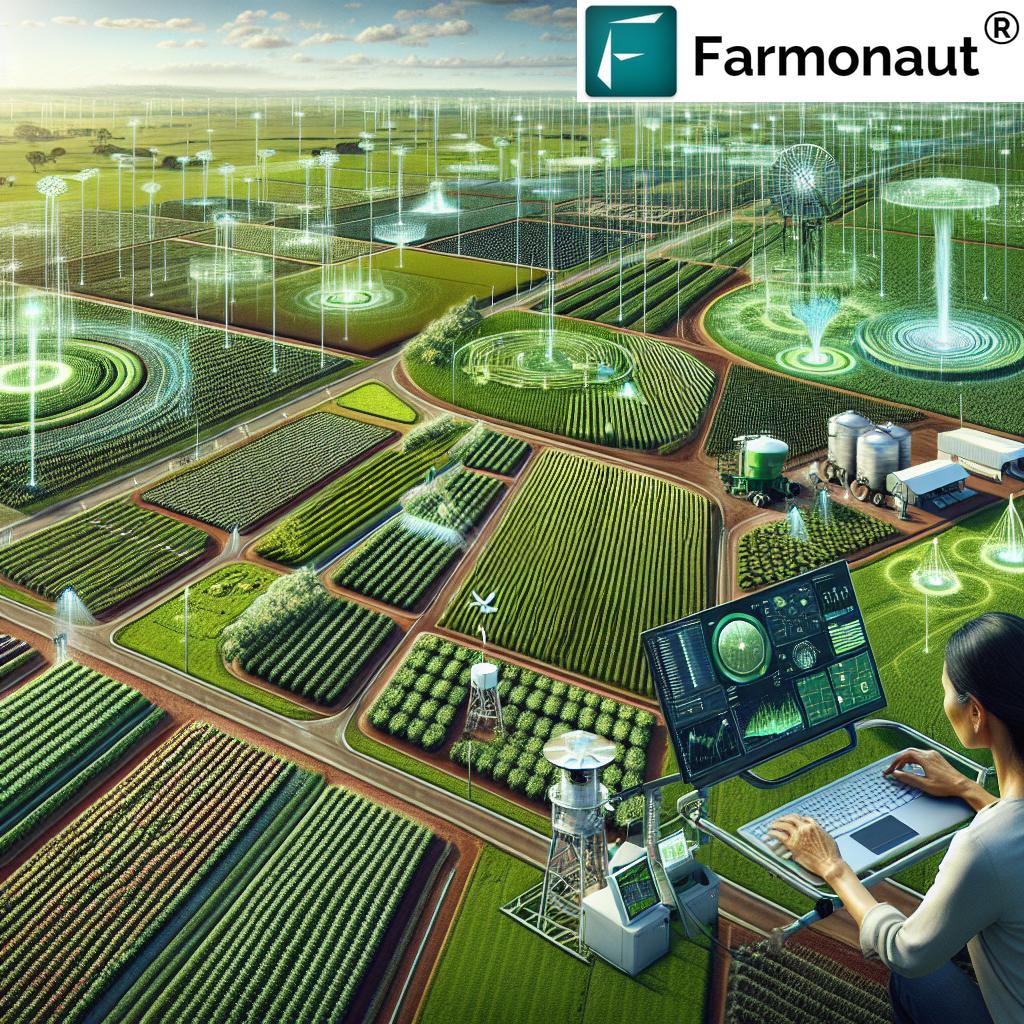
In the Murray-Darling Basin, where water scarcity is a pressing issue, precision irrigation systems are helping farmers reduce water usage while maintaining crop yields. By delivering water only where and when it’s needed, these systems conserve this precious resource and prevent over-irrigation, which can lead to soil degradation and runoff.
Farm Management Software: The Digital Backbone of Modern Agriculture
At the heart of precision agriculture is farm management software, which serves as the central hub for all farm operations. These powerful tools allow farmers to track everything from crop rotations to equipment maintenance, all in one place.
For a large-scale grain producer in Victoria, farm management software might be used to plan planting schedules, monitor fuel usage, and analyze yield data. By having all this information at their fingertips, farmers can make data-driven decisions that improve efficiency and profitability.
Soil Health Analysis: The Foundation of Productive Farming
Understanding and maintaining soil health is crucial for sustainable agriculture. Precision farming technologies are revolutionizing soil health analysis, allowing farmers to map soil properties across their fields with incredible detail.
In Tasmania’s rich agricultural lands, farmers are using advanced soil sensors to measure nutrient levels, pH, and organic matter content. This data enables them to apply fertilizers and amendments with pinpoint accuracy, improving soil health while reducing input costs and environmental impact.
Crop Yield Optimization: Maximizing Returns from Every Hectare
The ultimate goal of precision agriculture is crop yield optimization – producing more food with fewer resources. By combining all the technologies we’ve discussed, Australian farmers are achieving remarkable increases in productivity.
A sugarcane farmer in northern Queensland might use a combination of satellite imagery, soil sensors, and weather data to optimize their crop. By adjusting planting dates, irrigation schedules, and fertilizer applications based on this data, they can significantly boost their yield while reducing costs.
The Role of Agricultural Research
The advancements in precision agriculture wouldn’t be possible without the tireless work of agricultural researchers across Australia. Universities and research institutions are at the forefront of developing new technologies and refining existing ones to meet the specific needs of Australian farmers.
For instance, researchers at the University of Sydney are working on AI algorithms that can predict crop diseases before they become visible. This groundbreaking work could lead to even more effective early warning systems for farmers, further reducing crop losses and pesticide use.
The Future of Farming in Australia
As we look to the future, it’s clear that precision agriculture will play an increasingly important role in Australian farming. With climate change presenting new challenges, the ability to adapt quickly and make data-driven decisions will be crucial for the success of our agricultural sector.
We’re likely to see even greater integration of technologies, with AI and machine learning playing a larger role in farm management. Autonomous farming equipment, guided by GPS and AI, could become commonplace, further increasing efficiency and reducing labor costs.
Embracing the Precision Agriculture Revolution
For Australian farmers looking to embrace precision agriculture, there are numerous resources available. Companies like Farmonaut offer comprehensive platforms that bring together many of the technologies we’ve discussed. Their satellite-based farm management solutions provide valuable insights for farmers of all scales.
Explore Farmonaut’s offerings:
For those interested in integrating precision agriculture data into their own systems, Farmonaut also offers an API:
API: https://sat.farmonaut.com/api
API Developer Docs: https://farmonaut.com/farmonaut-satellite-weather-api-developer-docs/
Precision Agriculture Technology Adoption in Australia
| Technology | Adoption Rate (%) | Average Yield Increase (%) | Sustainability Impact | Primary Regions |
|---|---|---|---|---|
| Satellite Imagery | 65% | 15% | High | Western Australia, New South Wales |
| Agricultural Drones | 40% | 10% | Medium | Queensland, Victoria |
| Soil Sensors | 55% | 12% | High | South Australia, Tasmania |
| Farm Management Software | 70% | 18% | Medium | All regions |
| Smart Irrigation Systems | 50% | 20% | High | Murray-Darling Basin, Northern Territory |
Conclusion: A Brighter Future for Australian Agriculture
The adoption of precision farming technology in Australia is more than just a trend; it’s a necessity for the future of our agricultural sector. As we face the challenges of climate change, resource scarcity, and a growing global population, these technologies offer a path to more sustainable, productive, and profitable farming.
From the northern tropics to the southern temperate zones, Australian farmers are embracing precision agriculture, proving once again their ability to innovate and adapt. By harnessing the power of satellite imagery, remote sensing, and advanced data analytics, they are not only boosting crop yields but also safeguarding the land for future generations.
As we continue to develop and refine these technologies, the future of Australian agriculture looks brighter than ever. With precision farming leading the way, we can look forward to a more sustainable, efficient, and prosperous agricultural sector that will continue to feed our nation and the world for years to come.
FAQ Section
- What is precision agriculture?
Precision agriculture is a farming management concept that uses technology to observe, measure, and respond to variability in crops. It aims to optimize returns on inputs while preserving resources. - How does satellite imagery benefit farmers?
Satellite imagery provides farmers with a comprehensive view of their fields, allowing them to assess crop health, detect early signs of stress, and make informed decisions about irrigation, fertilization, and pest control. - What are the main benefits of precision agriculture?
The main benefits include increased crop yields, reduced input costs, improved sustainability, better decision-making capabilities, and more efficient use of resources like water and fertilizers. - Is precision agriculture suitable for small-scale farmers?
Yes, many precision agriculture technologies are scalable and can be adapted for use on smaller farms. Companies like Farmonaut offer solutions that are accessible to farmers of all scales. - How does precision agriculture contribute to sustainability?
Precision agriculture promotes sustainability by enabling more efficient use of resources, reducing waste, minimizing environmental impact, and helping farmers adapt to changing climate conditions.



